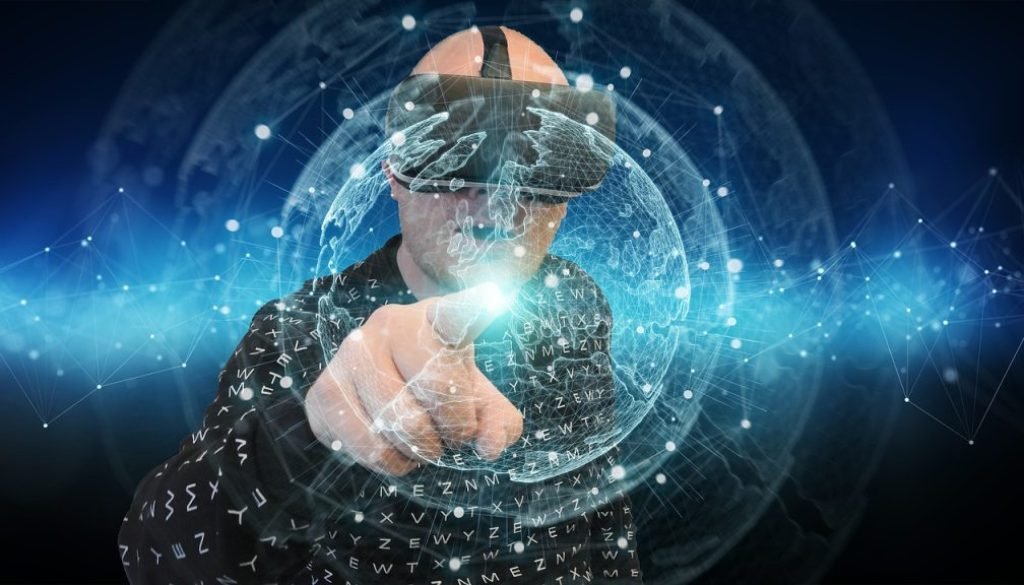Exploring the World of Virtual and Augmented Reality: The Future of Immersive Technology
Virtual and augmented reality technologies have made significant strides in recent years and are increasingly being used in various industries, from gaming to healthcare and education. These technologies offer immersive experiences that allow users to interact with digital environments in previously impossible ways.
Virtual reality (VR) is a technology that uses headsets to create fully immersive, 3D virtual environments. Users can interact with these environments using handheld controllers or other devices. VR technology is used in gaming, but it also has applications in fields such as education, training, and healthcare. For example, VR can be used to simulate dangerous or complex scenarios, allowing users to practice and learn in a safe environment.
Augmented reality (AR), on the other hand, overlays digital information in the real world. AR can be experienced through smartphones or other devices, and it is commonly used in applications such as gaming and navigation. AR technology is also being used in fields such as manufacturing, where workers can use AR headsets to see digital overlays of instructions while they work on physical objects.
The future of VR and AR is exciting, with continued advancements in technology and expanding applications in various fields.
Increased Accessibility: As VR and AR technology becomes more advanced and affordable, it will become more accessible to the general public. This will open up new opportunities for education, entertainment, and other fields.
Improved Hardware: Advancements in hardware, such as higher resolution displays and improved tracking sensors, will continue to improve the quality of VR and AR experiences.
Integration with Other Technologies: VR and AR technology are likely to be integrated with other emerging technologies such as artificial intelligence and the Internet of Things (IoT), creating new applications and experiences.
Expansion of Applications: As more industries adopt VR and AR technology, we will see new applications emerge in fields such as architecture, engineering, and construction.
Social Applications: The development of VR and AR social platforms will allow users to interact with each other in virtual environments, creating new opportunities for socialization and collaboration.
Overall, the future of VR and AR is bright, with continued advancements in technology and expanding applications in various fields. These technologies have the potential to revolutionize the way we interact with the world around us and provide new opportunities for education, entertainment, and communication.
Understanding Virtual and Augmented Reality: Definitions and Differences
Virtual Reality (VR) and Augmented Reality (AR) are two different technologies that offer immersive experiences to users.
Virtual Reality:
Virtual Reality is a technology that creates a simulated environment that users can interact with using a headset or other devices. In a virtual environment, the user is completely immersed in a digital world that can be either completely fabricated or a replication of a real-world environment. VR technology often requires a headset with built-in displays and motion tracking sensors, as well as handheld controllers to allow users to interact with the virtual environment. The goal of VR is to create a completely immersive experience that blocks out the real world and transports users to a digital world.
Augmented Reality:
Augmented Reality, on the other hand, is a technology that overlays digital elements onto the real world. AR is typically experienced through a Smartphone or tablet, but can also be experienced through specialized headsets or glasses. AR technology uses a camera to capture the real world and then overlays digital elements onto it. The digital elements can be anything from simple graphics to complex 3D objects. The goal of AR is to enhance the real world with digital elements that add additional information or entertainment value.
Key Differences:
Immersion: The primary difference between VR and AR is the level of immersion. VR is designed to completely immerse the user in a digital environment, while AR is designed to augment the real world with digital elements.
Devices: Another key difference is the devices used to experience VR and AR. VR typically requires a headset with built-in displays and motion-tracking sensors, while AR is typically experienced through a Smartphone or tablet.
Applications: VR and AR have different applications. VR is often used for gaming, training simulations, and other immersive experiences, while AR is often used for advertising, navigation, and information overlays.
In summary, Virtual Reality and Augmented Reality are two distinct technologies that offer different experiences to users. VR creates a simulated environment that immerses the user completely in a digital world, while AR overlays digital elements onto the real world to enhance it.
Virtual and Augmented Reality’s Effects on Several Industries
Virtual Reality (VR) and Augmented Reality (AR) are emerging technologies that have the potential to revolutionize various industries. Here are some of the ways that VR and AR are impacting different industries:
Gaming Industry: VR and AR have already had a significant impact on the gaming industry. VR technology allows gamers to experience immersive gameplay like never before, while AR technology is used in mobile games like Pokémon Go, which overlays digital elements in the real world.
Healthcare Industry: VR and AR technology is being used in the healthcare industry to improve patient outcomes. VR is being used to treat conditions like PTSD and anxiety disorders, while AR is being used to assist with surgical procedures and medical training.
Education Industry: VR and AR have the potential to transform the way we teach and learn. VR can create immersive learning environments that allow students to experience historical events or scientific phenomena, while AR can provide real-time information overlays for students.
Real Estate Industry: VR and AR are being used in the real estate industry to create virtual tours of properties. This technology allows potential buyers to experience a property as if they were there in person, which can save time and money for both the buyer and the seller.
Manufacturing Industry: VR and AR technology is being used in the manufacturing industry to improve productivity and safety. AR headsets can provide workers with real-time information overlays that can guide them through complex procedures, while VR simulations can be used for training and safety testing.
Tourism Industry: VR and AR are being used in the tourism industry to provide virtual tours of landmarks and attractions. This technology can give travelers a preview of what they can expect to see and do at their destination, which can help them plan their trip more effectively.
Overall, VR and AR have the potential to impact numerous industries positively, offering new and innovative ways to improve productivity, efficiency, and engagement.
Exploring the Possibilities of Virtual and Augmented Reality in the Future
Virtual and Augmented Reality are technologies that are rapidly evolving, and the possibilities for their future use are vast. Here are some of the possibilities for VR and AR in the future:
Remote Work and Collaboration: As more companies are adopting remote work policies, VR and AR technology can help improve collaboration between remote workers. VR can create virtual offices that allow remote workers to interact with each other as if they were in the same physical location, while AR can allow workers.
Entertainment: The entertainment industry is always looking for new ways to engage audiences, and VR and AR technology offers exciting possibilities. Future VR and AR technology could allow audiences to experience movies, concerts, and other events in completely immersive environments.
Healthcare: VR and AR technology are already being used in the healthcare industry to improve patient outcomes, but there are still many possibilities for future use. In the future, VR and AR technology could be used to create personalized treatment plans for patients or to help patients manage chronic conditions.
Education: VR and AR have the potential to transform the way we teach and learn. In the future, VR and AR technology could be used to create virtual classrooms that allow students to interact with teachers and classmates from all over the world, or to provide hands-on learning experiences that are not possible in a traditional classroom.
Retail: Retailers are always looking for ways to improve the shopping experience for customers. In the future, VR and AR technology could allow customers to try on clothes or test products before making a purchase, all from the comfort of their own homes.
Travel: VR and AR technology are already being used in the tourism industry to provide virtual tours of landmarks and attractions, but in the future, it could allow travelers to experience destinations in completely new ways. For example, VR technology could create immersive environments that allow travelers to experience a destination before even leaving home.
Overall, the possibilities for VR and AR technology in the future are vast, and as the technology continues to evolve, we can expect to see even more innovative uses in various industries.
Conclusion
Virtual Reality (VR) and Augmented Reality (AR) are emerging technologies that have the potential to transform various industries. The gaming industry has already seen the impact of VR and AR, while the healthcare; education, real estate, manufacturing, and tourism industries are also exploring the possibilities of these technologies. In the future, VR and AR have the potential to improve collaboration in remote work settings, transform entertainment experiences, personalize healthcare treatments, revolutionize education, enhance the retail experience, and provide immersive travel experiences. As technology continues to evolve, we can expect to see even more innovative uses of VR and AR in various industries, paving the way for a more immersive and connected world.
Related posts:
Exploring the World of Internet and Networking: Connecting People and Technology
The Importance of Compatibility Ensuring Your Hardware and Software Work Together



